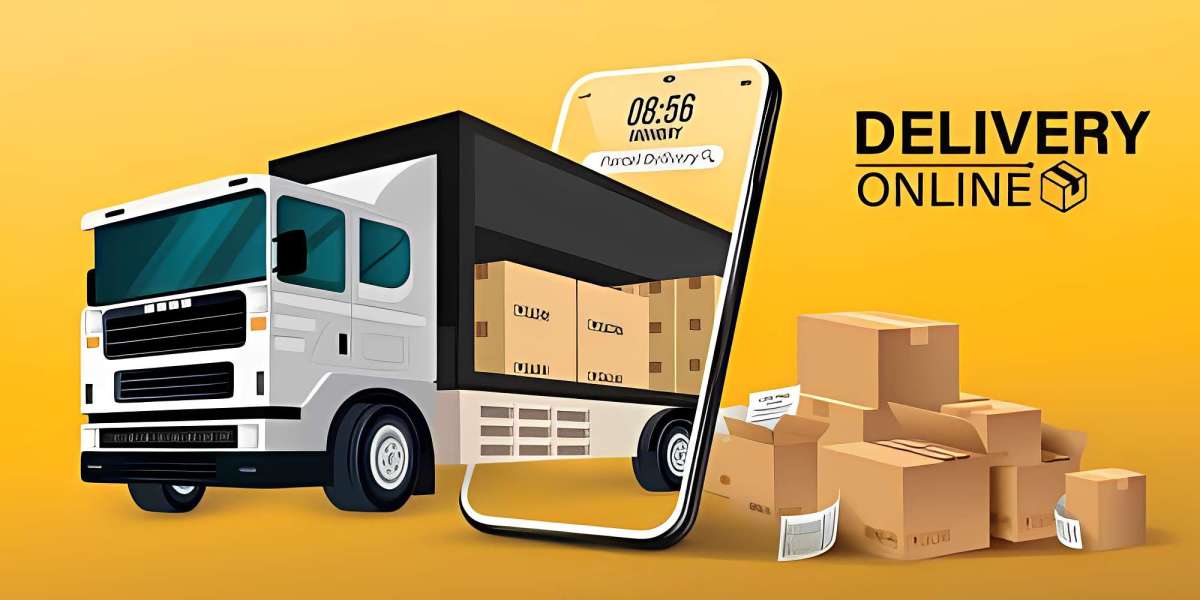Running a business in today’s fast-paced world comes with a unique set of challenges, especially when it comes to meeting customer expectations for fast, reliable deliveries. Whether you own a restaurant, retail store, or e-commerce business, an on demand delivery app can be a game-changer. These apps streamline logistics, boost efficiency, and enhance customer satisfaction—allowing you to compete with big players without the hassle of managing an in-house delivery fleet.
So, what exactly can an on-demand delivery app do for your business? Let’s break down the key benefits and why investing in one could be the smartest decision you make this year.
1. Increased Customer Satisfaction
1.1. Faster Delivery Times
Speed is everything in today’s world. Customers expect their orders to arrive quickly—whether it’s food, groceries, or retail goods. On-demand delivery apps use real-time tracking and optimized routing to ensure faster deliveries, keeping your customers happy and coming back for more.
1.2. Real-Time Tracking for Transparency
Nobody likes waiting around for a delivery with no clue when it will arrive. With live order tracking, customers can see exactly where their package is, reducing frustration and increasing trust in your brand.
2. Cost Savings and Efficiency
2.1. No Need for an In-House Delivery Fleet
Hiring and managing your own fleet of drivers is expensive. From paying salaries to maintaining vehicles, costs can skyrocket quickly. On-demand delivery apps eliminate this burden by connecting you with a network of independent drivers—allowing you to focus on growing your business instead of managing logistics.
2.2. Pay-As-You-Go Model
Many delivery apps operate on a pay-per-delivery basis, meaning you only pay for what you use. This is especially beneficial for small businesses or seasonal operations that don’t require constant delivery services.
2.3. Reduced Operational Costs
By outsourcing deliveries to an on-demand service, businesses save on:
- Vehicle maintenance and fuel costs
- Driver salaries and insurance
- Administrative costs of managing a logistics team
3. Expanded Market Reach
3.1. Access to a Larger Customer Base
Without a delivery service, your business is limited to local walk-in customers. With an on-demand delivery app, you can reach customers miles away who might not have otherwise discovered your business.
3.2. Competing with Larger Brands
Big companies like Amazon, Deliveroo, and Uber Eats set high standards for delivery convenience. Using an on-demand delivery app allows your business to compete on the same level—offering quick, seamless deliveries without the need for major investments.
4. Improved Order Accuracy and Efficiency
4.1. Automated Order Processing
Manual order-taking increases the risk of mistakes. Many delivery apps integrate directly with your POS system or website, automating the process and reducing human error.
4.2. Clear Communication with Drivers
Through the app, businesses can provide special instructions (e.g., contactless delivery, handling instructions) directly to drivers, ensuring a smooth and efficient process.
5. Increased Revenue and Sales
5.1. Meeting Customer Expectations = More Sales
Customers are more likely to order from businesses that offer fast, convenient delivery options. In fact, many consumers choose where to buy based on delivery speed and availability.
5.2. Upselling Opportunities
Delivery apps provide a chance to upsell complementary products—for example, adding drinks to a meal order or offering bundle deals for online shoppers.
5.3. Higher Order Volumes
With delivery options available, customers who might not have visited your store physically can now place orders online—leading to increased order volumes and revenue growth.
6. Seamless Integration with Technology
6.1. Integration with E-Commerce Platforms
Many delivery apps integrate with platforms like Shopify, WooCommerce, and Magento, allowing businesses to automate deliveries and manage orders efficiently.
6.2. AI-Powered Logistics Optimization
Advanced apps use AI to:
- Optimize delivery routes for faster service
- Predict demand spikes and prepare accordingly
- Allocate drivers efficiently based on location and order volume
7. Customization and Branding Opportunities
7.1. White-Label Delivery Apps
Some delivery platforms allow businesses to customize the app with their own branding, making it appear as if they have their own delivery service.
7.2. Personalized Customer Experience
Features like custom notifications, loyalty programs, and order tracking pages enhance the overall experience and keep customers engaged with your brand.
8. Sustainability and Eco-Friendly Delivery Options
8.1. Green Delivery Practices
Many on-demand delivery apps now support eco-friendly initiatives, such as:
- Electric bikes and scooters for deliveries
- Carbon offset programs
- Recyclable or biodegradable packaging options
8.2. Reducing Food Waste for Restaurants
Some apps allow restaurants to sell surplus food at discounted rates, helping to reduce food waste while increasing revenue.
9. Enhanced Safety and Security Features
9.1. Contactless Delivery Options
Since the pandemic, contactless delivery has become the norm. Customers and businesses can choose "leave at the door" options for added convenience and safety.
9.2. Secure Payment Methods
Delivery apps offer secure, cashless payment options, reducing risks associated with handling cash and improving transaction security.
10. Access to Data and Analytics
10.1. Business Performance Insights
Most delivery platforms provide access to real-time data on orders, customer behavior, and sales trends—allowing businesses to make data-driven decisions.
10.2. Customer Feedback and Reviews
Gathering and analyzing customer reviews helps businesses:
- Identify areas for improvement
- Refine their service offerings
- Build stronger relationships with customers
11. Future Trends in On-Demand Delivery for Businesses
11.1. AI and Automation
The future of delivery will see increased AI-powered logistics and automated deliveries, including drone delivery and self-driving vehicles.
11.2. Subscription-Based Delivery Models
More businesses are adopting subscription-based delivery services, offering unlimited deliveries for a flat monthly fee—boosting customer retention.
12. Choosing the Right On-Demand Delivery App for Your Business
12.1. Factors to Consider
When selecting a delivery platform, consider:
✔️ Coverage area and reach
✔️ Cost and commission fees
✔️ Integration with your current systems
✔️ Customer and driver support
12.2. Popular On-Demand Delivery Apps in the UK
- Deliveroo: Best for restaurants and takeaways
- Uber Eats: Offers a vast driver network
- Just Eat: Great for restaurants with established customer bases
- Stuart: Ideal for retail and e-commerce businesses
Conclusion
Adopting an on-demand delivery app isn’t just about convenience—it’s about staying ahead in a competitive market. By integrating a delivery solution into your business, you can increase sales, improve customer satisfaction, and reduce operational costs. Whether you run a restaurant, retail store, or e-commerce platform, leveraging the power of on demand delivery is a smart move that will keep your business thriving in the digital age.
FAQs
1. How much does it cost to use an on-demand delivery app for my business?
Most apps charge a commission per order, ranging from 10% to 30%, depending on the platform. Some offer subscription models with flat rates.
2. Is it better to have my own delivery service or use an app?
If you have high order volumes, an in-house service may be viable. However, for most businesses, outsourcing delivery is more cost-effective and efficient.
3. Can customers track their orders in real-time?
Yes! Most on-demand delivery apps offer real-time GPS tracking for a transparent and seamless experience.
4. What are the best delivery apps for small businesses?
Deliveroo, Uber Eats, Just Eat, and Stuart are great options, depending on your industry and needs.
5. How can I get started with an on-demand delivery app?
Simply sign up with a platform, integrate it with your POS or website, and start accepting orders!








